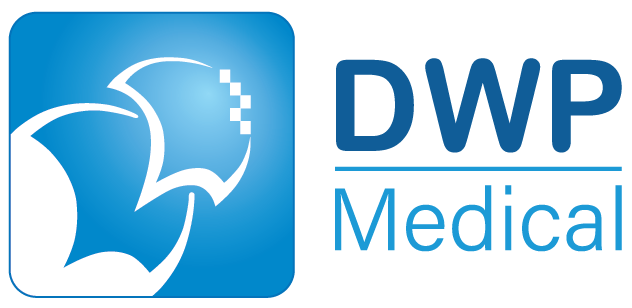A clearinghouse in medical billing functions as a middleman, which facilitates both speed and accuracy during healthcare claim submission procedures.
Healthcare providers and insurance companies exchange information through clearinghouses operating as middle entities. As the central function of medical billing operations, the clearinghouse accepts claims from doctors and hospitals after validating their accuracy. Then, it transfers them to insurance providers for review and payment.
Let’s talk about clearinghouse tasks and key features in detail. A better understanding of this will provide you with a smooth revenue cycle and happy clients.
What Is a Clearinghouse in Medical Billing?
Medical billing success depends heavily on clearinghouses that handle healthcare provider claims processing efficiently. A clearinghouse functions as an intermediary that connects healthcare providers, including doctors, to insurance corporations. Clearinghouse technologies verify healthcare claims before onward transmission to insurance companies by reviewing them for errors and processing mistakes.
Special review standards at clearinghouses enable the detection of potential claim issues to protect against insurance delays or rejections and submission errors. Hence, the successful clearinghouse claims submission to insurance companies results in a higher success rate and speeds up the payment processing.
The processes of a clearinghouse enable providers to verify their claims against the particular requirements set by each insurance provider. Insurance company requirements differ from one another regarding claim parameters. So, health claim submitters can rely on a clearinghouse service to verify claim format conformity before submission.
Process of a Medical Clearinghouse
Medical clearinghouse claims submission work according to the procedure that verifies claim accuracy and total completeness.
Claim Submission:
Medical claims submission starts with healthcare providers who create and send their claims to insurance companies. During the submission process, healthcare providers submit information about their services, patient details, and coding specifications. The healthcare provider bypasses the insurance company’s direct delivery and submits claims through the clearinghouse.
Claim Scrubbing:
After a clearinghouse gets claims from healthcare providers they start performing “claim scrubbing” analysis. The system reviews claim through an error-control process which examines vital contents. These include information completeness and coding accuracy along with format compliance. Insurance companies will reject or delay claims when the provider fails to maintain even minor accuracy in claim processing.
Forwarding the Claim:
The clearinghouse in medical billing sends error-free claims to designated insurance companies for their processing operations. The speed of claim processing at the insurance company level depends on the claim type and insurance provider protocol. However, it can lead to immediate processing; sometimes, there’s a delay.
Receiving Updates:
Insurance companies decide on claims through processing which leads to returns with updates. The clearinghouse receives this information from sources which it immediately delivers to the healthcare provider.
Feedback processed from insurers includes messages about whether the clinical claim obtained acceptance approval or which actions should activate further investigation. The clearinghouse supports claim analysis to detect issues, which it also resolves by processing corrected claims resubmissions.
Key Features of a Clearinghouse in Medical Billing
The features available at medical billing clearinghouses transform them into essential operational tools that healthcare providers need to succeed.
Here are some of the key features of a clearinghouse:
Claim Scrubbing:
Claim scrubbing remains a fundamental capability that allows clearinghouses to detect and fix errors before sending these corrected claims to an insurance provider. By performing the scrubbing process, the clearinghouse verifies that all required information is included properly. Making claims ready to avoid rejection or wait time.
Real-Time Updates:
The clearinghouse system provides continuous status reports about submitted claims through real-time capability. Healthcare providers obtain instant updates about their claim status showing acceptances, rejections or requirements for additional information. The system shortens response periods while allowing providers to communicate with patients quickly.
Multi-Payer Compatibility:
Every insurance company has its own rules and formats. A clearinghouse can process claims for multiple insurance companies. Thus, eliminating the need for providers to modify their claims to meet unique payer requirements.
Secure and Efficient Communication:
Secure data channels maintained by clearinghouses allow medical organizations to transfer protected patient information. It helps practitioners satisfy HIPAA privacy requirements. Through secure protocol, a clearinghouse in medical billing guarantees protected transfers of data as well as the safeguarding of sensitive information.
Analytics and Reporting:
Through their financial clearinghouse solutions, providers obtain analytics tools alongside reporting features to monitor their submitted claims. Medical facilities can assess their claim operation through data analytics to discover recurring patterns which lead to denied or delayed payments. Advanced analysis of this data allows healthcare providers to optimize their billing operations while fixing regular processing issues.
Cost Efficiency:
Through their work to prevent errors, clearinghouses help in cost reduction and time conservation for healthcare providers. Through a well-managed cash flow system as well as reduced administrative costs healthcare practices and hospitals operate efficiently.
Final thoughts
All in all, claim mistakes will result in payment processing problems if clearinghouses do not exist to verify submission practices. The adoption of claims by such clearinghouses includes detailed accuracy checks for both data structure and content before sending them onward.
Insurance companies maintain different requirements which determine how insurance claims should be presented to them. However, through early detection of mistakes, a clearinghouse allows healthcare providers to avoid payment complications and speeds up billing procedures.
Moreover, DWP Medical stands out as a trustworthy clearinghouse solution for all your business needs. You can improve your chances of successful claim management through DWP because you receive real-time status updates while also minimizing rejections or delays.
Partnership with us today to find a billing system that simplifies your operations while you dedicate your energy to patient care instead of paperwork!


